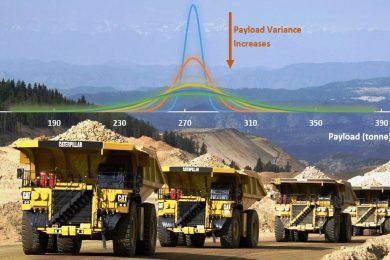Haul trucks are commonly used for transporting ore and overburden materials in surface mining operations and consume diesel fuel as the source of energy. The potential for savings in truck haulage operations has motivated mining companies to investigate ways of improving energy efficiency. Payload, truck velocity, haul road condition, road design, fuel quality, weather condition and truck driver skill are among the important parameters that affect fuel consumption. Payload variance has the most significant impact on the mine productivity, diesel energy consumption, greenhouse gas emission and associated costs.
An investigation about the effect of payload variance on fuel consumption of mine haul trucks has been conducted by a group of researchers at Mining3 and The University of Queensland. In truck and shovel operations in surface mines, loading the trucks is a stochastic process that depends on different factors such as bench geology, blast design, muckpile fragmentation, shovel operators’ efficiency, weather condition, truck and shovel utilisation, mine planning and mine equipment selection. An analysis of the haul truck payload data obtained from a number of mine sites around the world shows that the payload profile can be estimated by a normal distribution. The payload variance associated with this distribution is typically large. It is a function of geology, material particle size distribution, swell factors, material density and bucket fill factor.
A recent project aimed to investigate the effect of payload variance on fuel consumption for the best performance of the truck engine. The CAT 793D model truck was used in this project as it is a common truck used in surface mining operations. Based on the technical specifications of this










